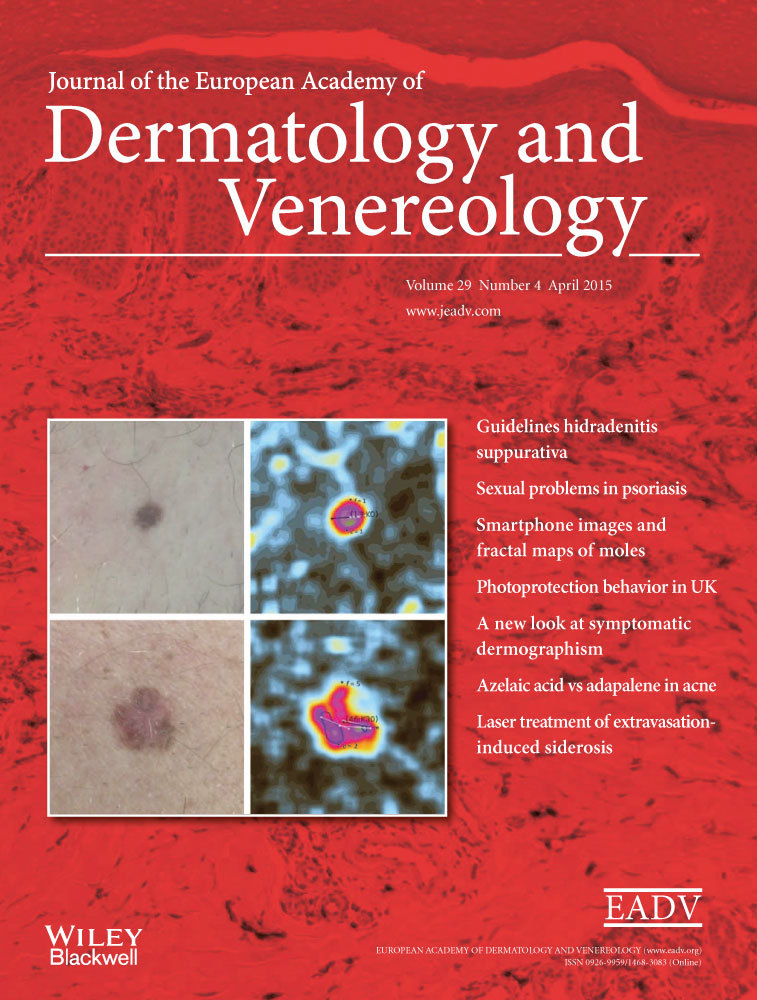Clinically atypical spitzoid lesions: semi-quantitative histologic index correlation with dermoscopic scores (ABCD rule, 7-point checklist and pattern analysis)
Conflicts of interest:
None declared.
Funding sources:
None declared.
Abstract
Background
The distinction of Spitz and Reed nevi with atypical features from melanoma may be a difficult task. In these cases, the dermoscopic scores could bring variable results and not always correlate with the histologic diagnosis.
Objective
The aim of this study was to compare the histopathologic and dermoscopic findings in a cohort of clinically atypical Spitz and Reed nevi.
Methods
We retrospectively reviewed 19 cases of atypical Spitz and Reed nevi from our files. We constructed a new semi-quantitative histologic index (HI) based on the reproducible microscopic features, and correlated it with two dermoscopic scores: ABCD and 7-point checklist, as well as with the predominant dermoscopic pattern.
Results
The HI values differs significantly when the multicomponent dermoscopic pattern was compared with the rest of patterns (U = 22.5, Z = 2.23, P = 0.01). The ABCD and the 7-point checklist scores did not show statistically significant correlation with the HI.
Conclusion
To our knowledge, this is the first report in which a semi-quantitative histologic score is compared to different dermoscopic scores in clinically atypical spitzoid lesions. This score can be used to correlate in an objective way the entire histologic picture with the standardized dermoscopic scores. In our series we found a higher HI for those spitzoid lesions with multicomponent pattern.




